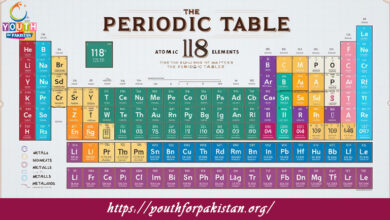Reaction Kinetics MDCAT MCQs with Answers

Welcome to the Reaction Kinetics MDCAT MCQs with Answers. In this post, we have shared Reaction Kinetics Multiple Choice Questions and Answers for PMC MDCAT 2024. Each question in MDCAT Chemistry offers a chance to enhance your knowledge regarding Reaction Kinetics MCQs in this MDCAT Online Test.
Reaction kinetics is the study of:
a) The equilibrium position of a reaction
b) The rate at which a reaction proceeds
c) The heat released or absorbed during a reaction
d) The concentration of products at equilibrium
The rate of a reaction is generally expressed in terms of:
a) Pressure change per unit time
b) Volume change per unit time
c) Change in concentration of reactants or products per unit time
d) Temperature change per unit time
The rate law of a reaction is determined by:
a) The stoichiometry of the reaction
b) The mechanism of the reaction
c) Experimental data showing how the rate changes with concentration
d) The equilibrium constant of the reaction
In a first-order reaction, the rate of reaction is:
a) Directly proportional to the concentration of one reactant
b) Directly proportional to the square of the concentration of one reactant
c) Independent of the concentration of reactants
d) Inversely proportional to the concentration of reactants
The activation energy of a reaction can be determined by:
a) The Arrhenius equation
b) The Nernst equation
c) The Van der Waals equation
d) The ideal gas law
The rate of a reaction is often affected by:
a) Temperature
b) Concentration of reactants
c) Presence of a catalyst
d) All of the above
The half-life of a reaction for a first-order reaction is:
a) Dependent on the initial concentration of reactants
b) Independent of the initial concentration of reactants
c) Inversely proportional to the rate constant
d) Directly proportional to the concentration of reactants
The rate of a reaction can be increased by:
a) Increasing the temperature
b) Increasing the concentration of reactants
c) Adding a catalyst
d) All of the above
The method of initial rates helps determine:
a) The rate constant of the reaction
b) The activation energy of the reaction
c) The order of the reaction with respect to each reactant
d) The equilibrium constant of the reaction
The rate-determining step in a reaction mechanism is:
a) The step with the highest activation energy
b) The step with the lowest activation energy
c) The fastest step
d) The step with the most reactants
The order of a reaction can be determined using:
a) The method of initial rates
b) The method of continuous variations
c) The method of integrated rate laws
d) Both a and c
In the method of continuous variations, the rate of reaction is:
a) Measured by varying the temperature of the reaction mixture
b) Measured by varying the concentration of one reactant while keeping others constant
c) Measured by observing the color change of the reaction mixture
d) Measured by changing the pressure of the reaction vessel
The half-life of a second-order reaction is:
a) Independent of the initial concentration of reactants
b) Directly proportional to the initial concentration of reactants
c) Inversely proportional to the rate constant
d) Constant for all initial concentrations
The reaction mechanism is:
a) The overall balanced equation for a reaction
b) The step-by-step sequence of elementary reactions
c) The equilibrium constant of the reaction
d) The rate law of the reaction
The rate of reaction can be affected by:
a) The surface area of solid reactants
b) The concentration of reactants
c) The presence of a catalyst
d) All of the above
The rate of reaction is usually measured in terms of:
a) Moles per liter per second
b) Liters per mole per second
c) Moles per liter per minute
d) Moles per liter per hour
The rate constant of a reaction is determined by:
a) The concentration of reactants
b) The temperature at which the reaction occurs
c) The pressure of the reaction mixture
d) The volume of the reaction vessel
The rate law of a reaction is:
a) Always determined from the stoichiometric coefficients
b) A function of the concentration of reactants only
c) Determined experimentally by measuring the rate of reaction
d) A function of the temperature only
The reaction rate increases with an increase in temperature due to:
a) An increase in the number of collisions
b) A decrease in the activation energy
c) An increase in the concentration of reactants
d) A change in the reaction mechanism
In a reaction where the rate is dependent on the concentration of reactants, the rate constant
k is:
a) A constant for all reactions
b) Independent of temperature
c) Dependent on temperature
d) A function of the reactant concentration
A reaction with a rate constant that decreases with increasing temperature is:
a) Endothermic
b) Exothermic
c) Irreversible
d) Reversible
The order of reaction with respect to a particular reactant can be determined by:
a) Measuring the rate of reaction at different temperatures
b) Changing the concentration of that reactant and observing the change in rate
c) Measuring the change in volume of the product
d) Observing the change in color of the reaction mixture
The rate of a reaction can be expressed in terms of:
a) Moles per liter per second
b) Moles per liter per minute
c) Moles per liter per hour
d) All of the above
The reaction rate is influenced by:
a) The nature of the reactants
b) The surface area of reactants
c) The presence of a catalyst
d) All of the above
For a first-order reaction, the concentration of the reactant decreases:
a) Exponentially with time
b) Linearly with time
c) Inversely with time
d) Quadratically with time
The effect of a catalyst on the rate of a reaction is to:
a) Increase the activation energy
b) Increase the reaction rate
c) Change the reaction mechanism
d) All of the above
The rate of a reaction is typically measured in:
a) Moles per liter per second
b) Moles per liter per minute
c) Moles per liter per hour
d) Moles per liter per day
The rate constant
k for a reaction is:
a) Dependent on the concentration of reactants
b) A function of the temperature
c) A measure of the reaction yield
d) Dependent on the volume of the reaction vessel
The order of a reaction with respect to each reactant is:
a) Always equal to the stoichiometric coefficient of that reactant
b) Determined experimentally
c) Equal to the equilibrium constant
d) Always zero
In a reaction mechanism, the intermediate species are:
a) Reactants that appear in the rate law
b) Products that are present at the end of the reaction
c) Species that are formed and consumed within the mechanism
d) Species that are present in the final equilibrium mixture
The rate of a reaction with respect to each reactant can be determined by:
a) Measuring the change in volume of the product
b) Measuring the change in concentration of reactants
c) Measuring the change in pressure of the reaction mixture
d) Observing the change in color of the reactants
The method of initial rates is used to determine:
a) The equilibrium constant
b) The rate constant
c) The order of reaction with respect to each reactant
d) The activation energy
If you are interested to enhance your knowledge regarding Physics, Chemistry, Computer, and Biology please click on the link of each category, you will be redirected to dedicated website for each category.





